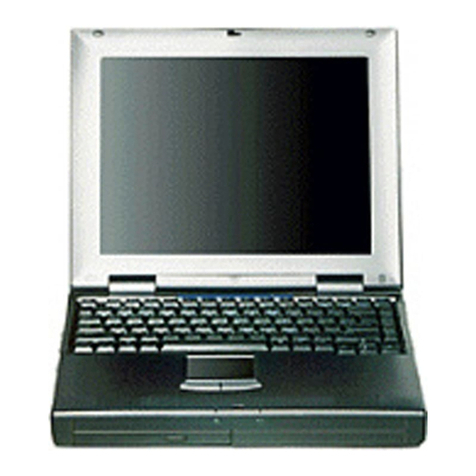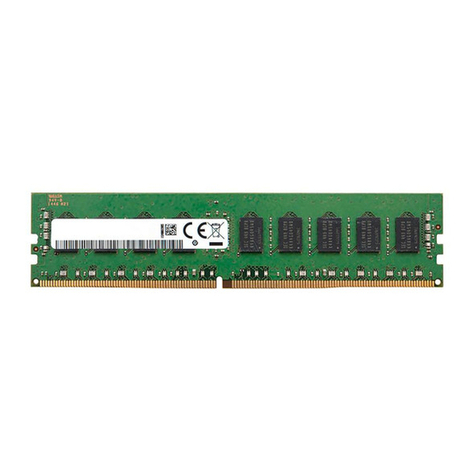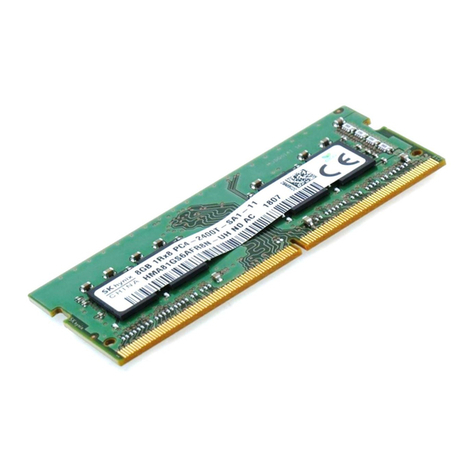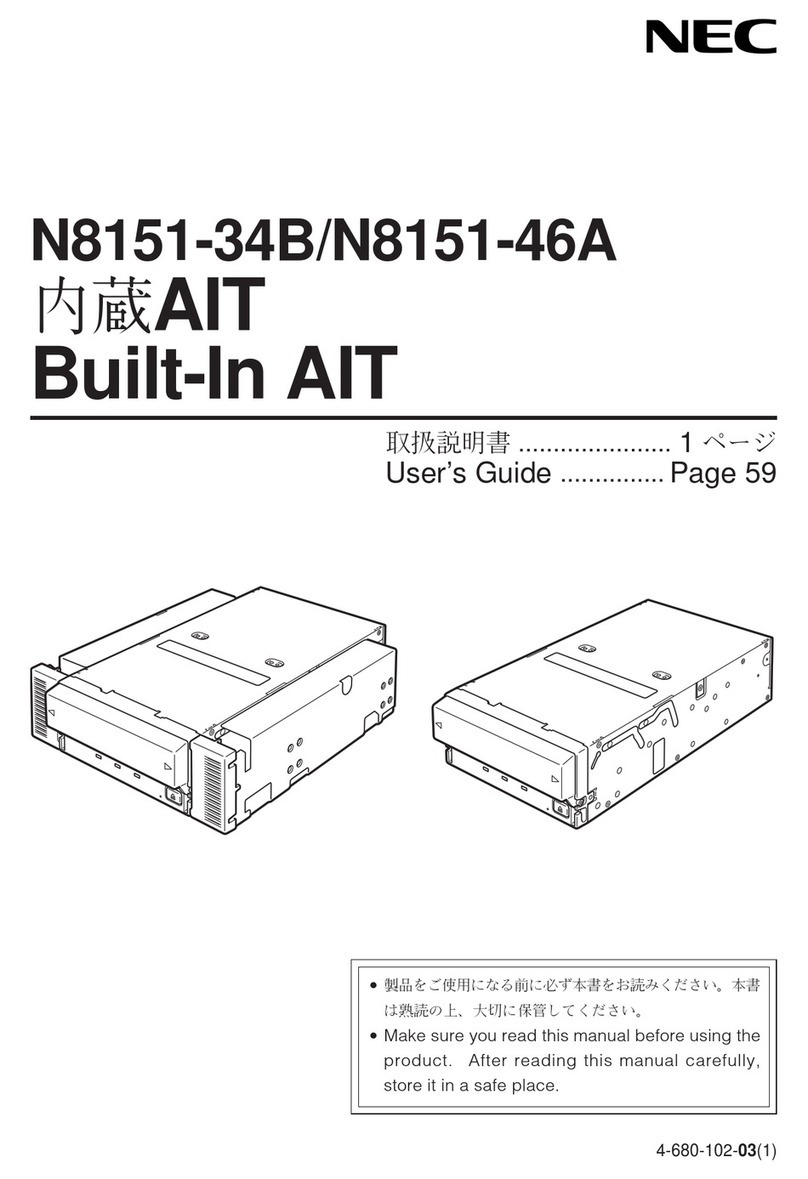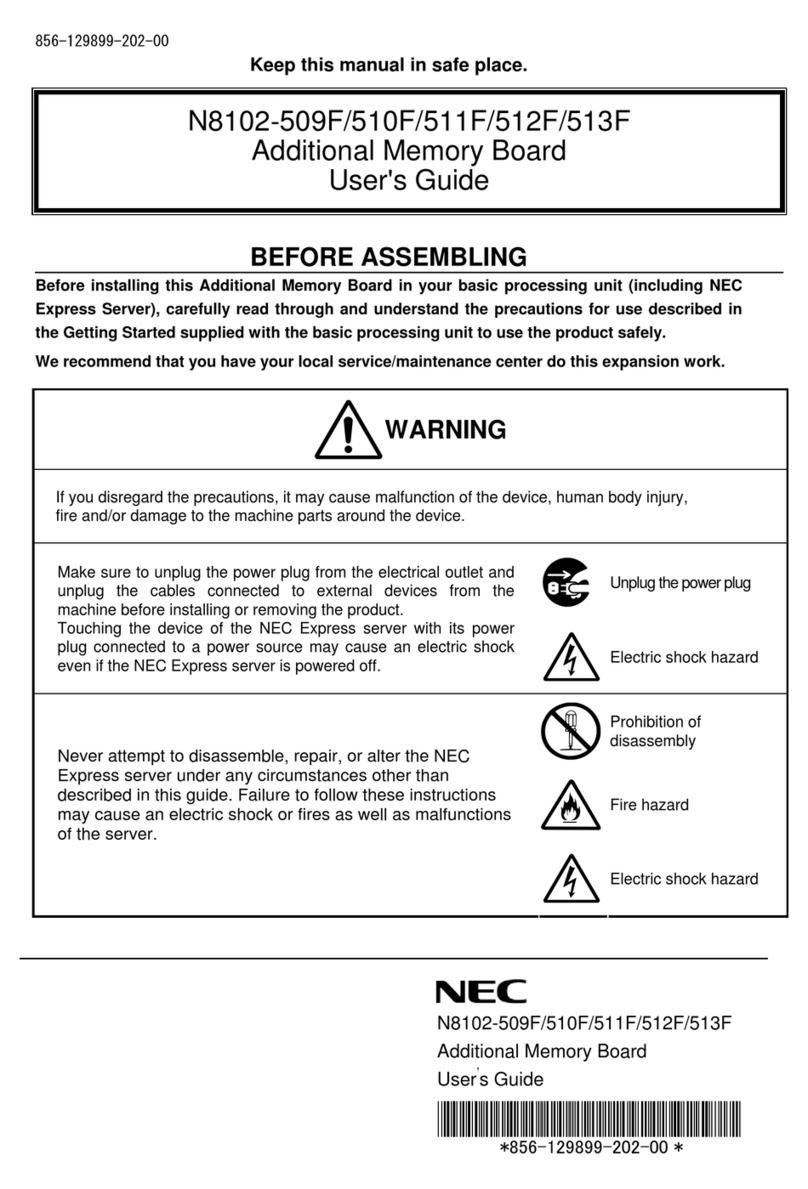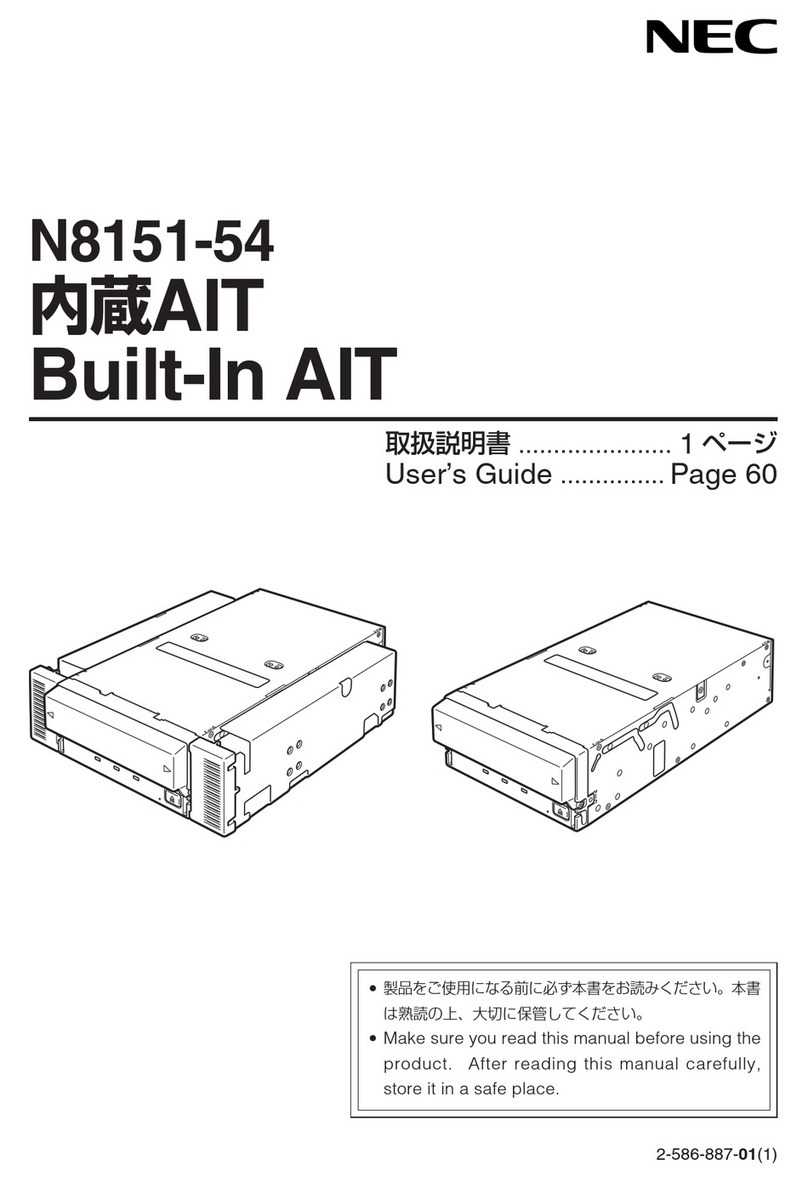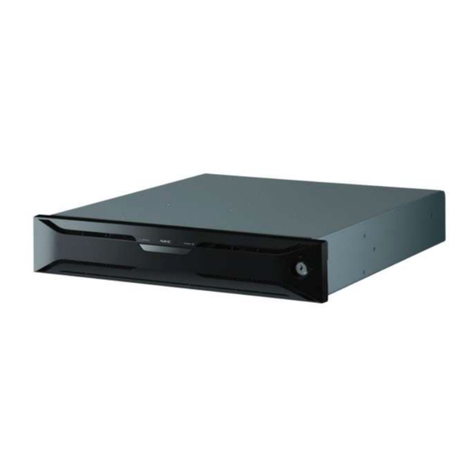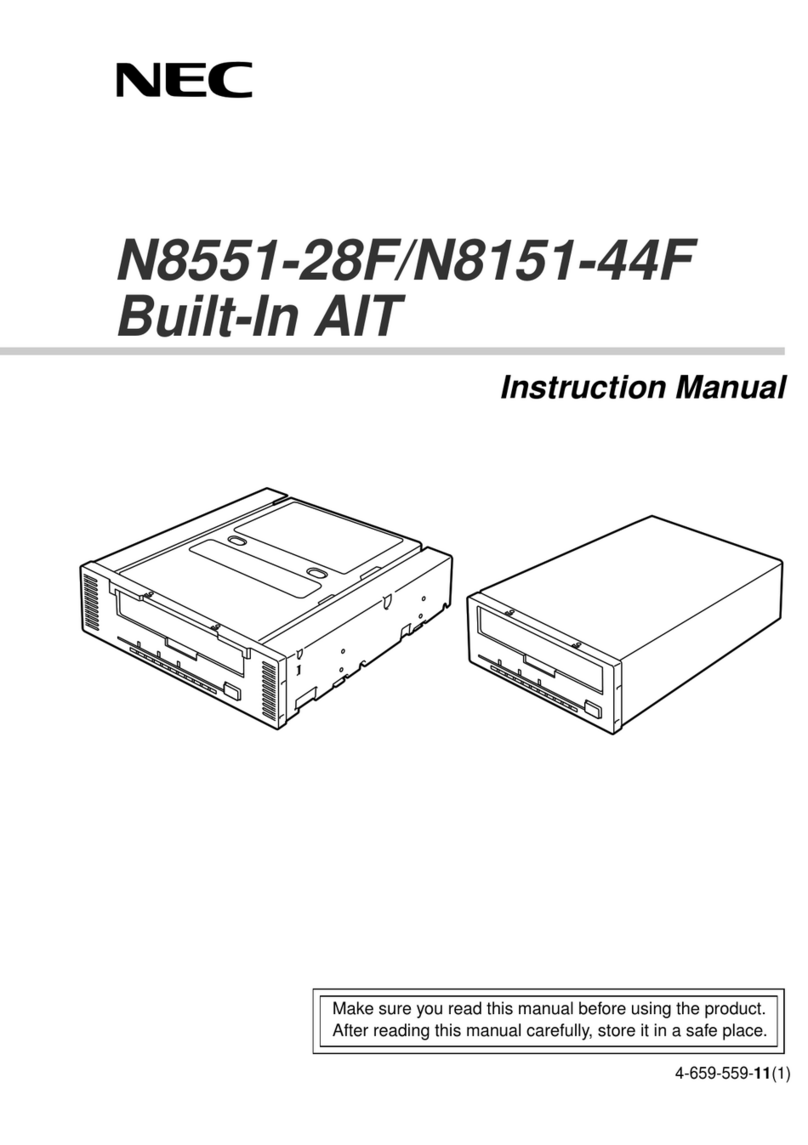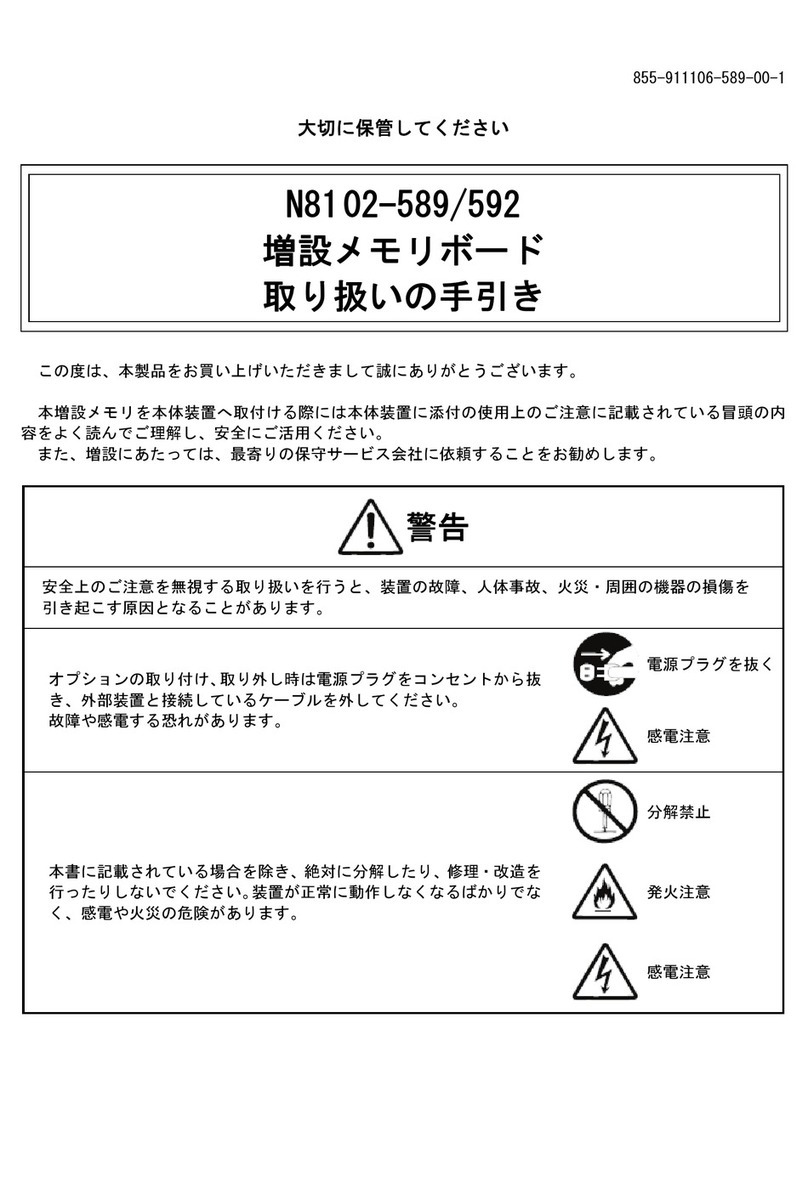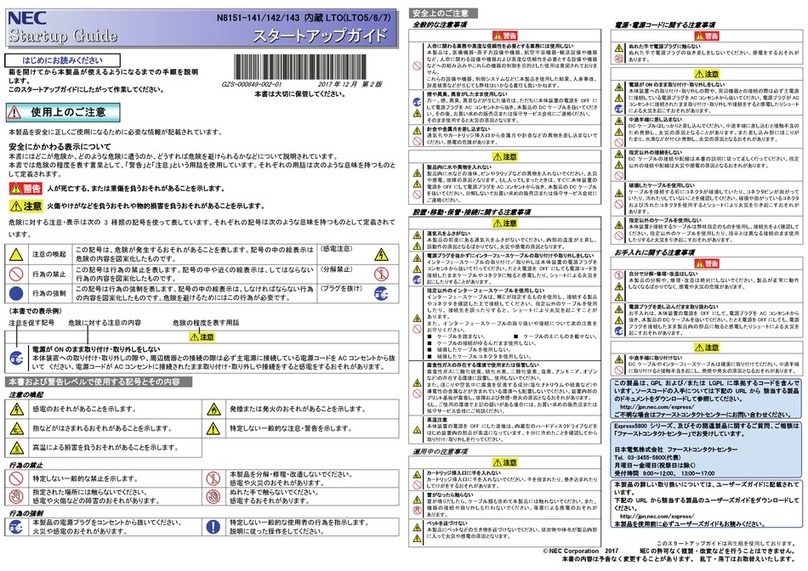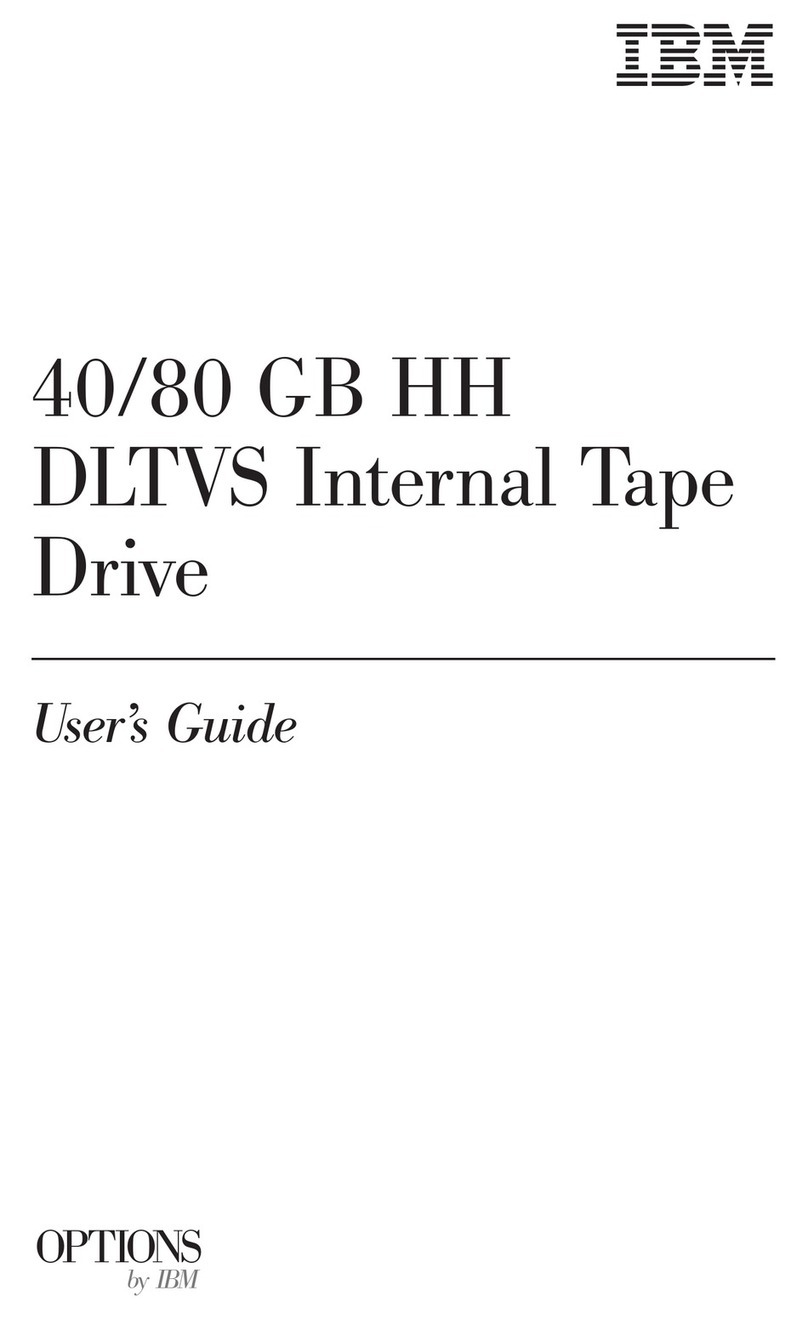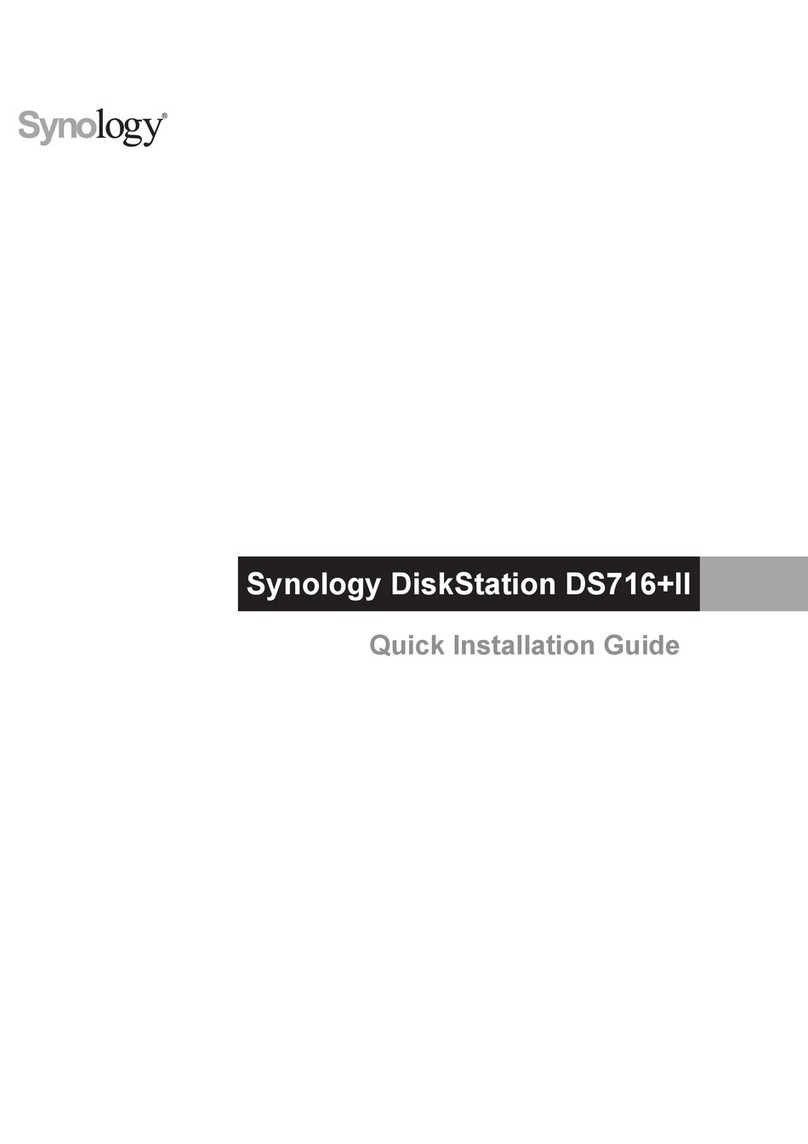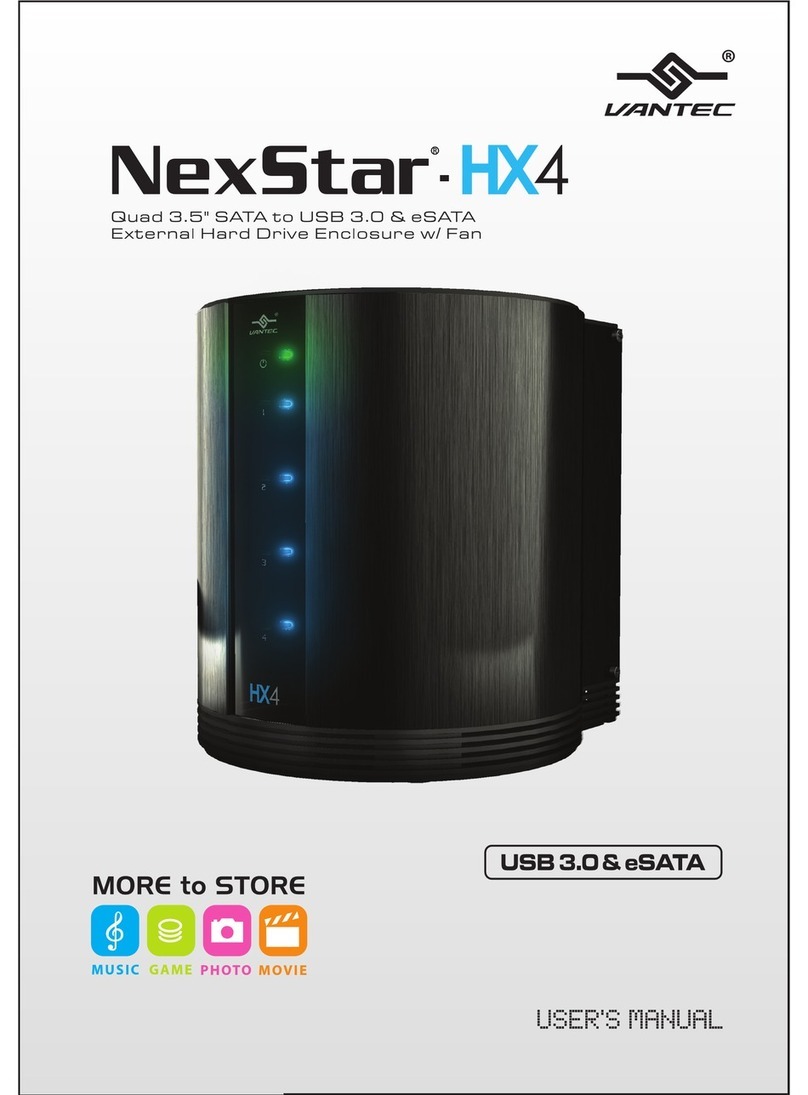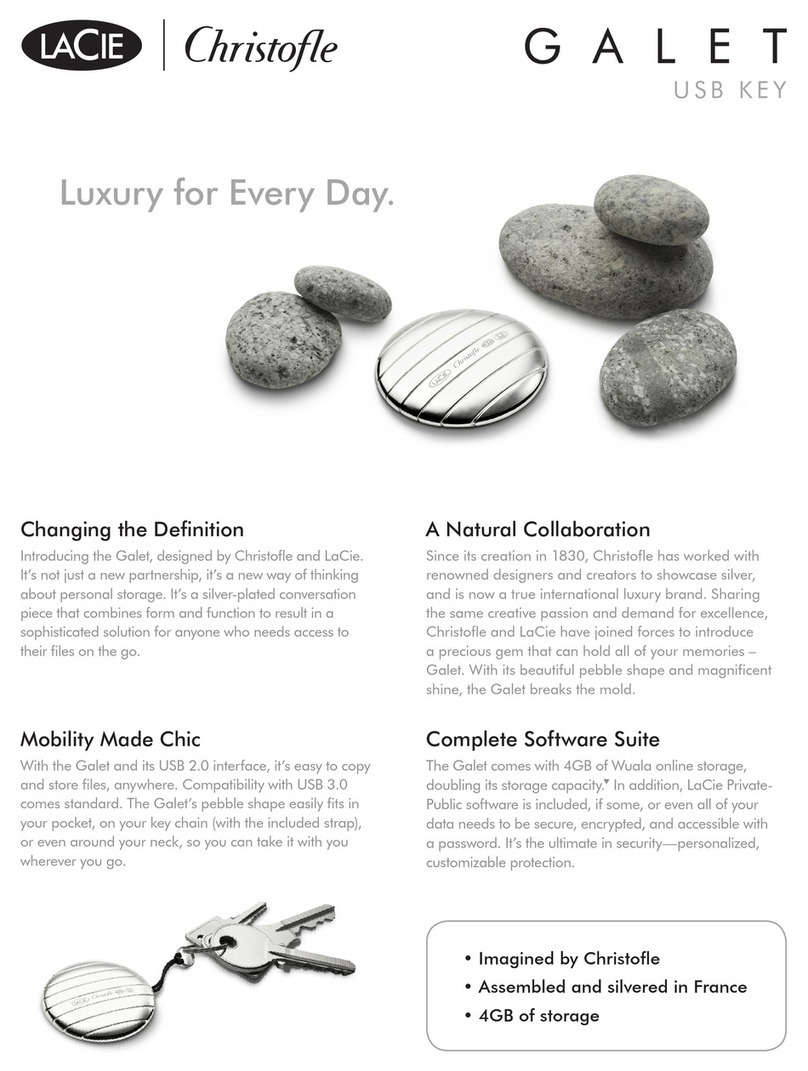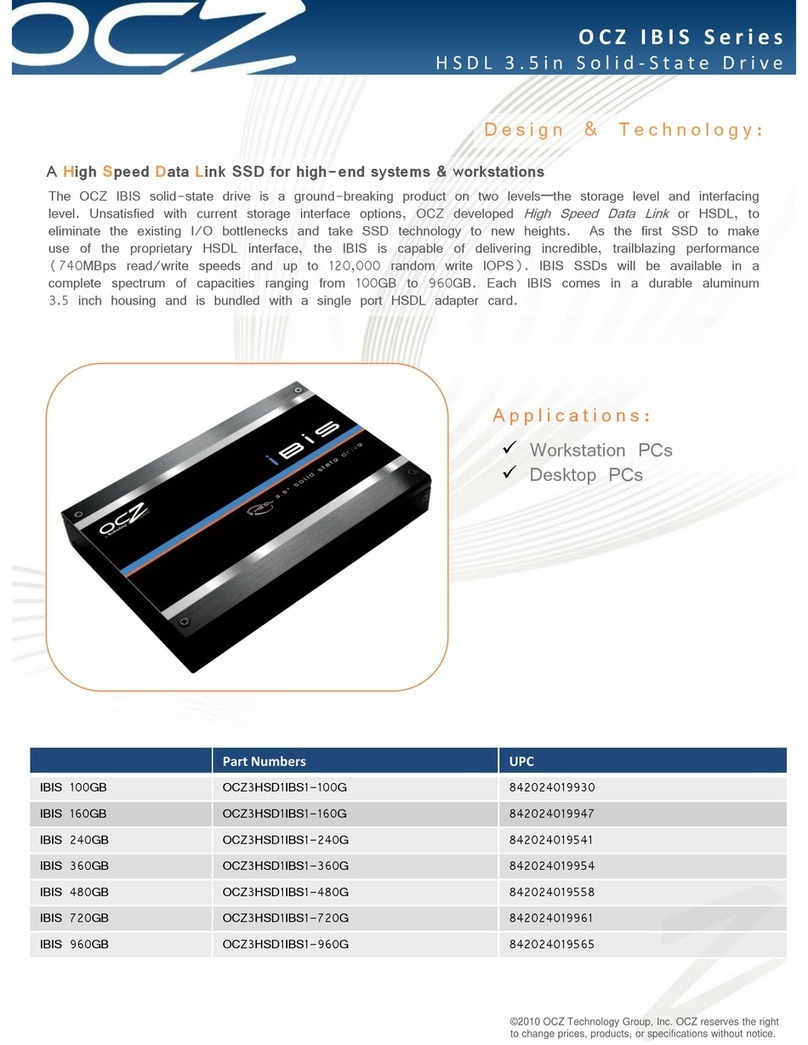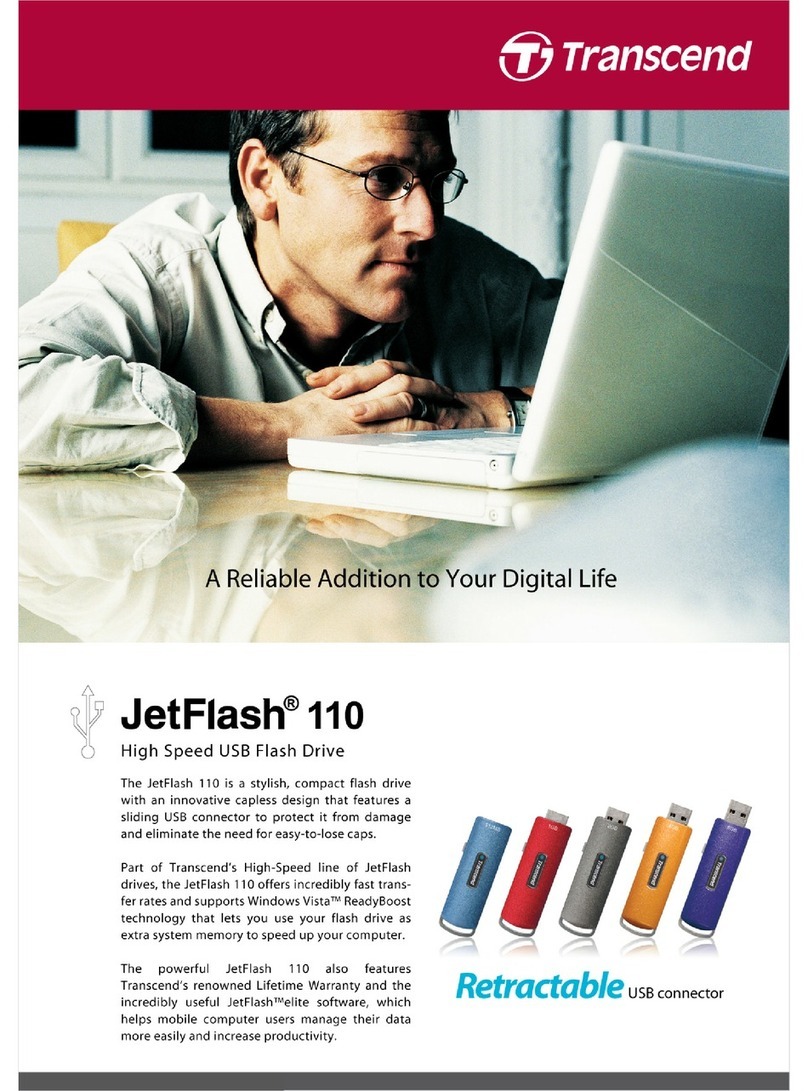NS170 User Guide - Table of Contents
Contents - v
Expansion File Device Bay _________________________________________ 4-16
Installing a File Device __________________________________________ 4-16
Removing a File Device __________________________________________ 4-20
Installing or Removing 3.5-inch Hard Disk Drives _______________________ 4-21
Installing a 3.5-inch Hard Disk Drive _______________________________ 4-22
Removing a 3.5-inch Hard Disk Drive ______________________________ 4-26
Installing or Removing Random Access Memory ________________________ 4-27
Installing DIMMs _______________________________________________ 4-28
Removing DIMMs ______________________________________________ 4-29
Installing and Removing a PCI Board _________________________________ 4-30
RAID Controller _______________________________________________ 4-31
SCSI Controller ________________________________________________ 4-34
Installing a Board onto the PCI Board _______________________________ 4-37
Setting after Installation __________________________________________ 4-39
Removing a Board from the PCI Board ______________________________ 4-40
Replacing the Battery ______________________________________________ 4-41
Cabling the Devices _______________________________________________ 4-42
The IDE Cable _________________________________________________ 4-42
The S-ATA Cable ______________________________________________ 4-42
Server Power Cables ____________________________________________ 4-43
Cabling a CD/DVD-ROM, CD-RW, or IDE Tape Drive ________________ 4-43
Cabling a Hard Disk Drive ________________________________________ 4-44
Cabling a Floppy Disk Drive ______________________________________ 4-45
Preparing the Devices ______________________________________________ 4-46
Preparing a CD-ROM or DVD-ROM Drive __________________________ 4-46
Preparing a S-ATA Hard Disk Drive ________________________________ 4-46
Preparing a Tape Drive __________________________________________ 4-47
IDE Device Configuration ________________________________________ 4-47
SCSI Device Configuration _______________________________________ 4-47
Internal Cabling __________________________________________________ 4-48
Installing SCSI Hard Disks _______________________________________ 4-48
Installing S-ATA Hard Disks ______________________________________ 4-49
Connecting a Disk Array Controller ________________________________ 4-50
Standard RAID Types ___________________________________________ 4-51
Connecting a 5.25-inch Device ____________________________________ 4-52
Power cables __________________________________________________ 4-53
5. Problems Solving ____________________________________________________ 5-1
Overview _________________________________________________________ 5-2
Static Precautions __________________________________________________ 5-2
Resetting the Server ________________________________________________ 5-3
Hard reset ______________________________________________________ 5-3
Soft reset ______________________________________________________ 5-3
Troubleshooting Guide ______________________________________________ 5-4
Server Viewers __________________________________________________ 5-4
Problems at initial Server Start-up _____________________________________ 5-5
Problems After the Server
Has Been Running Correctly _________________________________________ 5-6
Problems Running New Application Software ____________________________ 5-7

